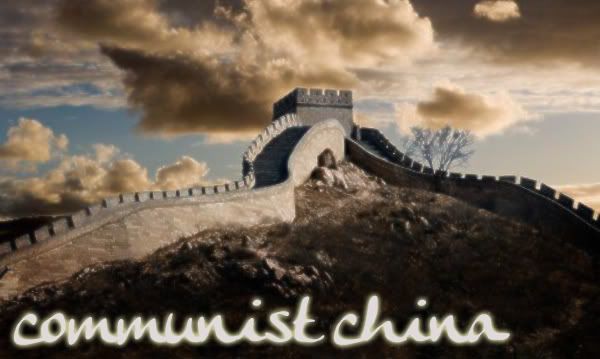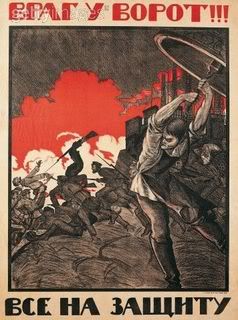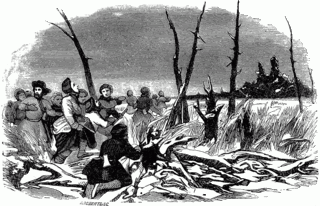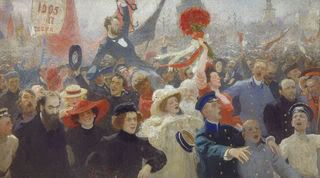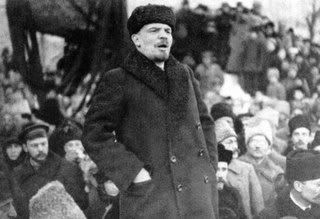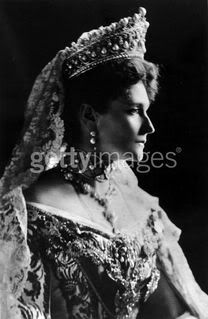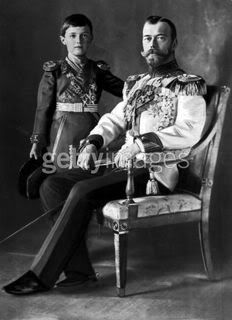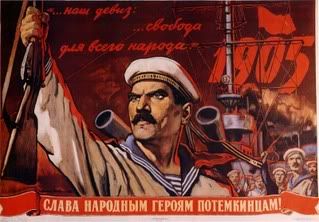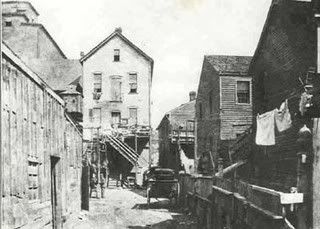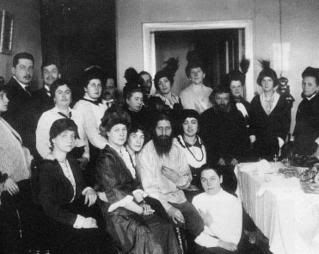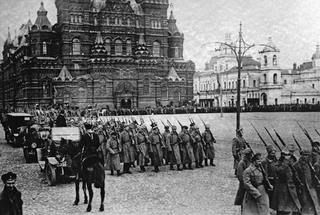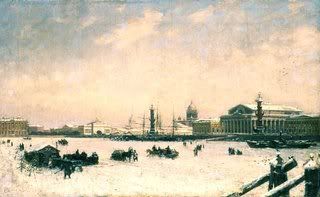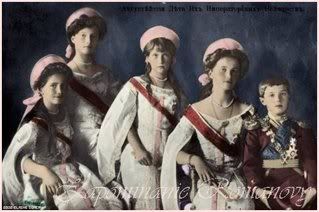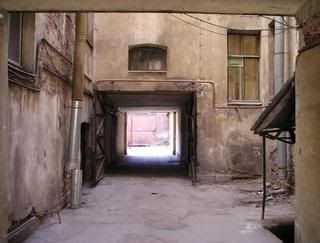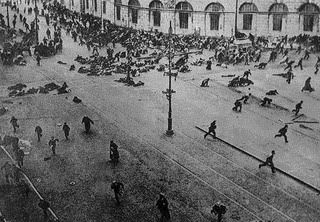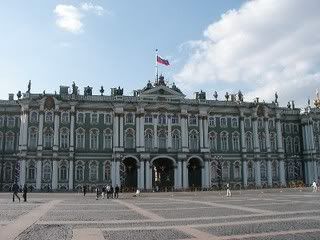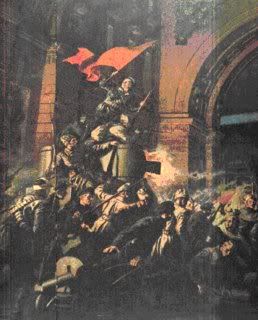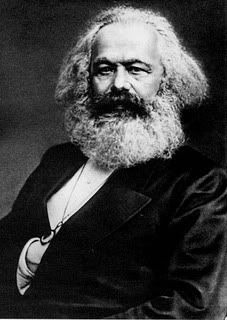
Political Structure
The Provisional Government replaced the Tsar at the front, and initially, the governing of the country was easy-going due to the widespread atmosphere of elation. However, it was not a politically elected body and it also faced many of the remaining problems that the Tsar had failed to solve. There were very heavy military losses being suffered at the front; there was a great food shortage and the public were complaining that their situation had not improved much since the abdication of the Tsar.
Lenin speaking to the people
The Provisional Government moved against the Bolsheviks, arresting activists and in retaliation, the Bolsheviks portrayed it as an attack against the people and marched on the Provisional Government to overthrow them, and finally, managed to take control of the government.
The Bolsheviks went on to govern Russia many years after the Revolution, and the Soviet Union succeeded the Provisional Government, and it was based on one party rule of the Communist Party aka Bolsheviks. No opposition was tolerated and a new kind of oppression fell over Russia especially after Stalin succeeded Lenin.

Joseph Stalin

The hammer and sickle symbol for the Communist Party - It targeted the working class of the population and promised equal rights for the poor.
Russia adopted the new ideology of Communism under Lenin's new regime. Communism promised equal wages and equal rights for everyone, regardless of race, language, religion and status as it was built on a classless structure. It states that the only way to establish a wealthy society and country for all is to have the working class replace the bourgeoisie (refers to businessmen, merchants etc who did not do hard labour, but worked in another sector of the economy. They were the current ruling class at that time). It sought to end capitalism (free trade) and aimed to achieve collective ownership, in which the entire population earned the same money and same treatment as one entity.
After elections were held, the Congress adopted a decree that transferred power to the Soviets of Workers', Soldiers' and Peasants'. The Bolsheviks claimed to represent an alliance of workers and peasants of the Soviet Union. Under their guidance, decrees were made to seize church property and private lands that were to be redistributed out among the peasants and wages were fixed at higher rates.
However, when Stalin took over, he wanted the industrialization of Russia to be quicker and more massive. He introduced several plans that although created a tremendous leap in the industrial capacity, required a large amount of work and energy. Workers were soon clocking in 16-18 hours a day, and more than a hundred thousand workers died each year from overwork and exhaustion. Failure to complete the quota of 16 hours resulted in severe punishments. Due to such heavy allocation of resources to industrial development, a famine occurred. It was the extreme opposite to the Tsarist regime, where industrialization was a slow and reluctant process. Stalin was so eager for modernisation that he sped the rest of the country through it, destroying many people's happiness as he did so during this quest for industrialization.
Rapid industrialization
Economic Situation
Under the new regime, employment rates soared due to the rapid industrialization of Russia. The New Economic Policy that had been established by Lenin, which restored private ownership to some small companies and to the farming industry. It allowed peasants to lease and hire labor, and they were allowed to keep the surplus (as compared to during the Tsar's rule, where the government took all the surpluses with no compensation). Farmers had the option to sell the surplus grain, which provided them with a large incentive to work hard and produce more grain. Agrarian production began to increase rapidly, generating more money for Russia than ever before.
The NEP helped Russia recover from its economic plight after the First World War, Russo-Japanese War and Russian Revolution, and the rate of poverty began to decrease dramatically. economy began to move faster than ever before. With new plans implemented to industrialize Russia, industrialization brought in many benefits and it helped modernise farming methods to make them more effective with higher yields. Factories were churning out high quality goods that would sell for high prices, raking in more money for the country. With industrialization came a huge number of availible jobs, and unemployment was no longer a problem. Women also experienced increasingly better socio-economic situations as they were given better jobs.
